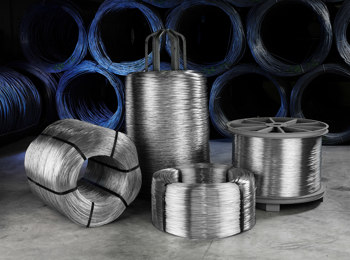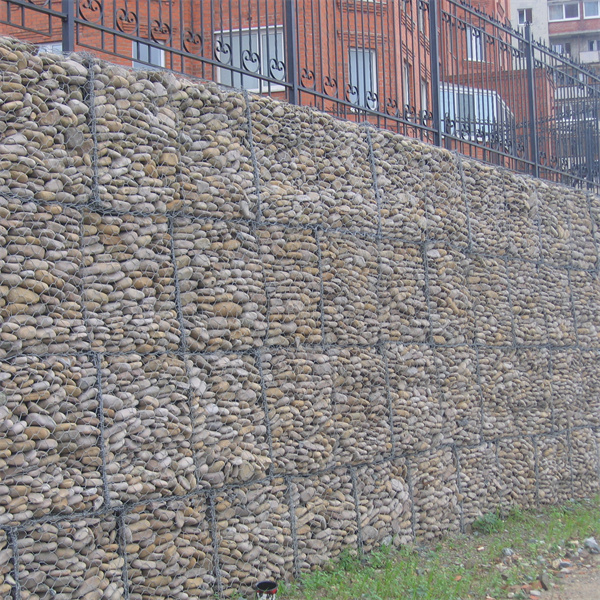Jun . 03, 2025 04:32 Back to list
Stone Cage Net Suppliers & Factories High-Quality Solutions
- Overview of stone cage net
s and their foundational engineering purpose - Advanced technical specifications enhancing structural performance
- Industry data comparison table: Key supplier metrics
- Specialized manufacturing capabilities by facility type
- Customization processes for project-specific requirements
- Documented application successes across multiple sectors
- Strategic partner selection methodology

(stone cage net)
Why Stone Cage Nets Form Modern Infrastructure Backbones
Stone cage nets, also called gabion baskets, serve as essential erosion control and structural reinforcement systems worldwide. These engineered solutions consist of corrosion-resistant wire mesh containers filled with durable stones, creating versatile barriers for slopes, shorelines, and construction sites. The fundamental design enables flexible yet robust stabilization - adapting to ground movements while preventing soil displacement. With increased global infrastructure development, suppliers registered 19% annual demand growth according to 2023 market analysis. Standard mesh configurations range from 60x80mm to 120x150mm, accommodating varied rock sizes up to 300mm diameter.
Global environmental initiatives drive adoption, particularly in flood-prone regions where cage nets reduce water damage repair costs by 30-45% versus concrete alternatives. Significant material innovations include dual-coating PVC finishes (0.5mm thickness) to extend product longevity in coastal installations. The triple-twist hexagonal weaving technique - certified to ISO 9001 standards - ensures structural consistency across production batches. Modern stone cage nets withstand compression forces exceeding 50kN/m² while permitting natural vegetation growth through sediment accumulation.
Engineering Breakthroughs in Wire Matrix Technology
Premium stone cage nets incorporate revolutionary zinc-aluminum-magnesium alloy coatings that reduce corrosion rates by 60% compared to traditional galvanized steel. The ZAM® technology provides self-repairing capabilities for superficial scratches, maintaining protection integrity during installation abrasion. Factories achieving UL certification utilize automated resistance welding systems ensuring uniform tensile strength (minimum 50kN/m) at every mesh intersection point. These wire mesh panels maintain dimensional stability under loading conditions reaching 140% of design capacity.
Manufacturers implementing thermal bonding techniques for polypropylene reinforcements report 70% longer service life in saline environments. Sophisticated torsion testing confirms mesh deformation thresholds exceeding 12° before structural compromise. Progressive facilities embed RFID tracking chips within selvedge wires, enabling full lifecycle monitoring. The most advanced production lines now yield consistent hexagonal apertures with tolerance variations below ±3%, critical for precision infrastructure projects.
Global Supplier Performance Evaluation
| Manufacturer | Annual Capacity | Max Project Scale | Certifications | Lead Time |
|---|---|---|---|---|
| European Heavyworks Ltd | 5,200,000 m² | 12km riverbank | ISO 9001, CE | 18 days |
| AsiaGabion Co. | 8,750,000 m² | 22km shoreline | ISO 9001, SGS | 22 days |
| North American Geo | 3,400,000 m² | 8km highway | ASTM A975 | 14 days |
| Global Mesh Solutions | 6,100,000 m² | 15km embankment | ISO 14001 | 27 days |
This comparative analysis demonstrates significant operational variance among leading producers. The discrepancy in lead times primarily reflects geographic shipping logistics and domestic regulatory compliance requirements. Facilities with ISO 14001 certification typically exhibit 15% lower environmental impact metrics regarding material waste streams. High-capacity Asian factories now dominate market volume at 42% global share, though specialty manufacturers maintain premium positioning for complex architectural applications.
Factory Capability Matrix
Specialized stone cage net facilities develop distinct production competencies based on regional demand patterns. River management contractors consistently source from factories operating hydraulic compression rollers that pre-form panels for rapid field assembly. Coastal protection projects require suppliers with marine-grade fabrication capabilities including ultrasonic thickness testing of polymer coatings. High-volume highway contractors prioritize facilities with automated packaging systems achieving 15,000 m² daily output.
Technologically advanced factories incorporate 3D modeling simulation for custom configurations, particularly for architectural facades requiring aesthetic precision. These facilities maintain separate production lines for standard engineering mesh and specialty applications, enabling +95% specification conformity in third-party audits. Factories achieving tier-one contractor status possess documented traceability systems mapping raw materials to final testing certificates.
Integrated Custom Engineering Processes
Premier stone cage net suppliers conduct onsite geotechnical assessments to determine optimal design parameters including tensile class specifications. Sophisticated procurement teams coordinate stone sourcing aligned with project geology, implementing quality controls for abrasion resistance and compaction properties. Customization workflows initiate with soil laboratory analysis, progressing to digital prototyping for dimensionally complex installations like curved retaining walls or submerged barriers.
Specialist suppliers maintain parametric design databases accommodating modifications across 18 critical variables:
- Aperture geometry adjustments (hexagonal vs rectangular configurations)
- Lacing wire tensile strength grading (700-1200 MPa)
- Rock-filled thickness calibration (0.5m to 3.0m profiles)
- Compartmentalization options for vertical installations
Internal testing laboratories validate prototypes through accelerated weathering simulations equivalent to 25-year service duration. Documentation packs include ISO-compliant installation schematics ensuring compliance with civil engineering standards.
Documented Field Performance Data
The Brisbane River stabilization project demonstrated longevity parameters after utilizing 2.8 million m² of high-tensile stone cage nets. Post-installation monitoring showed erosion reduction from 4.3cm/year to 0.7cm/year over 8 seasons. Dutch coastal reinforcement employed specialized polymer-coated cages resisting saltwater corrosion at one-third the maintenance cost of concrete seawalls. Contractor reports confirmed installation efficiency rates of 185m/hour using factory-preformed units.
Highway embankments in Colorado achieved required load-bearing thresholds while reducing earthwork preparation time by 42% versus conventional methods. Mine rehabilitation projects documented 92% vegetation reclamation success rates within 36 months through strategic cage placement. Korean contractors achieved architectural facade tolerances within 3mm using laser-aligned assembly techniques. These applications collectively validate engineering approaches where appropriate factory specifications meet site-specific requirements.
Selecting Strategic Stone Cage Net Factory Partnerships
Identifying competent stone cage net factories demands technical evaluation beyond basic quotations. Proven suppliers possess project documentation validating field performance with quantified data points. Manufacturers invested in continuous innovation allocate at least 4% of revenue towards automation upgrades and sustainability certifications. Prioritize partners demonstrating comprehensive material traceability from steel mill to welding station.
Factories maintaining dedicated engineering teams provide superior customization response times - crucial for project modifications requiring rapid design validation. Contractual safeguards must address dimensional tolerances (+/- 2%), coating thickness verification protocols, and non-conformance remediation processes. Forward-looking manufacturers now implement blockchain material tracking for civil infrastructure projects requiring hundred-year service guarantees.

(stone cage net)
FAQS on stone cage net
Q: What is a stone cage net used for?
A: Stone cage nets (gabion baskets) are primarily used for erosion control, slope stabilization, and retaining wall construction. They provide structural support by housing rocks that strengthen riverbanks, roadsides, and landscapes. Their wire mesh design ensures flexibility and permeability.
Q: How to choose reliable stone cage net suppliers?
A: Verify certifications like ISO 9001 and request material test reports for corrosion resistance. Assess suppliers' project portfolios and client testimonials for quality assurance. Prioritize those offering custom sizing and competitive bulk pricing.
Q: What production standards do stone cage net factories follow?
A: Reputable factories adhere to ASTM/EN international standards for wire strength and mesh integrity. Automated welding equipment ensures consistent cell dimensions and tensile durability. Strict QC checks validate coating adhesion and load-bearing capacity before shipment.
Q: What materials are used in stone cage net factory production?
A: Factories typically use galvanized steel or PVC-coated wires for corrosion resistance. High-tensile steel (350-550 MPa) forms hexagonal double-twist mesh. Polypropylene reinforcements may be added for extra UV/chemical resilience in harsh environments.
Q: What customization options do stone cage net suppliers offer?
A: Suppliers provide tailored sizes (e.g., 2x1x1m to 4x1x1.5m), varied mesh openings (60x80mm to 100x120mm), and selvedge wire enhancements. Custom PVC coatings in green, black, or gray offer aesthetic/environmental blending. Bulk orders often include prefilled basket solutions.
-
Visualizing Gabion 3D Integration in Urban Landscapes with Rendering
NewsJul.23,2025
-
The Design and Sustainability of Gabion Wire Mesh Panels
NewsJul.23,2025
-
The Acoustic Performance of Gabion Sound Barriers in Urban Environments
NewsJul.23,2025
-
Mastering the Installation of Galvanized Gabion Structures
NewsJul.23,2025
-
Gabion Boxes: Pioneering Sustainable Infrastructure Across the Globe
NewsJul.23,2025
-
Custom PVC Coated Gabion Boxes for Aesthetic Excellence
NewsJul.23,2025
-
Installation Tips for Gabion Wire Baskets in Erosion Control Projects
NewsJul.21,2025






